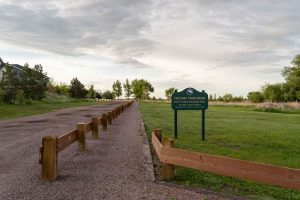On June 26, I became an Ironman in the city of Coeur D’Alene, Idaho. It was my first Ironman competition.When anyone thinks of the Ironman, his or her first thought is the Hawaii Ironman, where the World championship takes place.An Ironman triathlon consists of a 2.4-mile swim, a 112-mile bike ride and a marathon (26.2 miles) – all totaling 140.6 miles – all to be completed in less than 17 hours, without any outside assistance other than race officials and course volunteers.The history of the Ironman began in 1978 when John Collins, a naval commander stationed in Oahu, settled a bet regarding who was the fittest athlete: swimmers, cyclists or runners. He proposed combining three popular races (the Waikiki Roughwater 2.4 mile swim, the Around Oahu 112-mile bike ride and the standard marathon, 26.2 miles) into a one day event.”Whoever finishes first, we’ll call Ironman”. And so it began, only 15 men started and completed the event; their times ranging from 11:45 hours to 24 hours.The next year’s race boasted 50 athletes and caught the attention of Barry McDermott, a journalist from Sports Illustrated, whose 10-page spread on the event caused the race to swell to over 100 participants (including 2 women) the next year, with coverage on ABC’s Wide World of Sports. And the rest is history.There are now 18 Ironman events in the world. Six take place in the U.S. – Lake Placid, New York; Panama City, Fla.; Madison, Wisc.; Coeur D’Alene, Idaho; Tempe, Ariz., and the Hawaii Ironman. Most races fill up quickly, so commitments to the vent are made a year ahead.My personal journey began by watching the 1998 Ironman World Championship on NBC one rainy November day in Michigan. While I sat amazed at the unbelievable tenacity of the professional field, what touched my soul was the human side of Ironman, the stories of the age groups. These athletes were untouchable, or so I thought.Mac (my husband) and I moved to Colorado Springs in 1999, and became immersed in the land of the “Big Healthy.” We participated in local running races and joined the YMCA. In 2000, I decided to do a local sprint distance triathlon in Pueblo (1/4 mile swim, 12 mile bike and 3.2 mile run), and I was hooked. Over the next five years, I increased my distance, speed and endurance and competed in Olympic and Half Iron triathlons.I signed up to do Coeur D’Alene in September 2004, just two weeks before we opened Falcon Physical Therapy!Many people ask what I do to train for a triathlon and I believe training began in childhood. Before the advent of computers and more than five television stations, children played outside. We rode our bikes to the pool, we swam and ran after each other, and then we rode home, played, and ran more. We were all natural triathletes!Today, for me to successfully train for such a distance as the Ironman requires more than a strong athletic base. I needed the following components:
- A “buy-in” from the family: Luckily Mac is a physical therapist and not only sees the need for exercise but he ritualistically fixes and stretches my strained and battered body. I ran every Friday morning from Briargate to Falcon (via Tamlin Road). I showered at the clinic and began my day.
- Golf outings: Mac is an avid golfer and whether he plays 9 or 18 holes, the scenario was set: He plays, I ride, we meet back at the clinic.
- Having the courage to train alone: I completed several long rides (100-plus miles) and runs alone. I needed to know that I could push myself through the rough spots without the aid of another person.
- The courage to look a little stupid: My favorite ride is on Highway 24 between Falcon and Calhan. While the bright colors I wear are functional on the road, they look a tad out of place when I “clip-clop” down the isles of the Calhan Loaf and Jug in my cycling shoes, buying Gatorade and Power bars.
- Using time wisely and schedule training around the family
- Pick a race destination and plan a vacation around the race venue. Pick a good race location with something for everyone.





